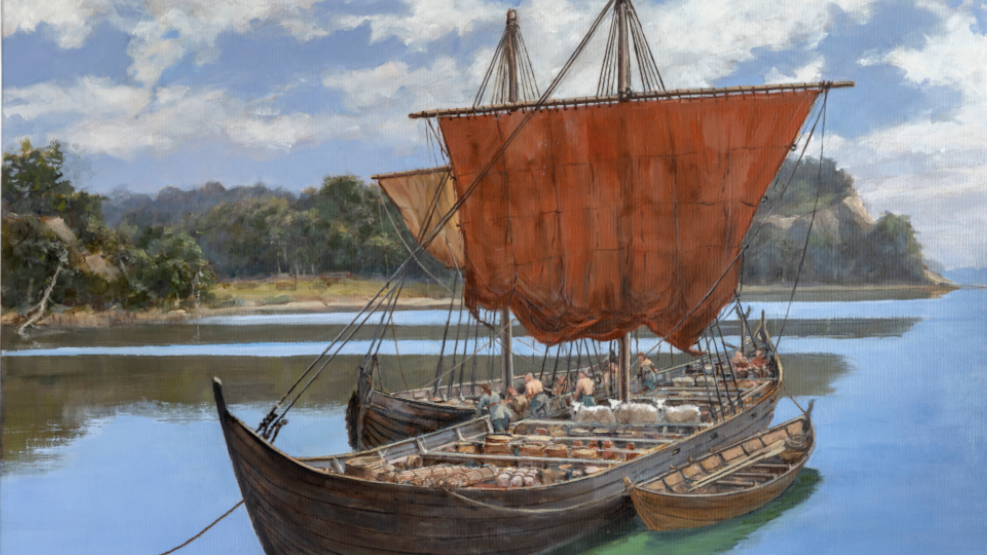
Gain an insight into the Viking Age – Lynæs
Discover Skuldevig near Lynæs and experience an important piece of Denmark’s maritime history – from the Viking Age natural harbour to the medieval ship Lynæs I.
Follow in the Wake of the Vikings in Skuldevig near Lynæs
A journey to the medieval harbour trade of Skuldevig and the impressive ship Lynæs I sheds light on an important part of Denmark’s maritime history. A natural harbour of strategic importance in the Viking Age and one of the country’s best-preserved medieval ships make the area a fascinating destination.
Skuldevig – A Natural Harbour of Historical Significance
Located near Lynæs Harbour, Skuldevig played a crucial role from around 850 to 1150 as a summer transshipment point. Its natural geography provided shelter from the westerly winds, making it ideal for transferring goods from large seagoing vessels to smaller boats capable of navigating the shallow and stony waters of Roskilde Fjord. Roskilde was then a central seat of power, and all trade routes to the city passed by sea – through Skuldevig.
Lynæs I – An Oak Masterpiece
Built in the Viking Tradition
The ship Lynæs I was discovered in 1975 during an expansion of Lynæs Harbour. It has been dated to around 1140 and built with a clinker-built hull in the style of Viking ships – a tradition now recognised as UNESCO Intangible Cultural Heritage.
Technically and Historically Impressive
The vessel measured approximately 25 metres in length and 6 metres in width, with a cargo capacity of up to 60 tonnes. It was used for transport between ports in the Nordic region – and possibly as far as Iceland and England – carrying trade goods such as grain, herring, livestock, and textiles. Its construction required around 50,000 working hours, 24 large oak trees, iron rivets, wool for sails, and tar for maintenance.
A Dramatic End
Lynæs I likely sank during a southwesterly storm while anchored. The wreckage was scattered over several locations and excavated in 1975. Today, the preserved remains are kept in the National Museum’s storage, but the site and its story can still be experienced in Lynæs and Skuldevig – close to Klintebakken, where control over the entrance to Roskilde was maintained.
Practical Information
Visitors can follow the Halsninoen hiking route and find parking at Lynæs Harbour and St. Karlsminde Stejleplads. Along the way, you can still draw water from Boes Spring, which flows along the route by the coast – just as in the Viking Age.
At the Stejleplads, you will find an information board with plenty of exciting history. Please note that it is NOT possible to see the actual ship, only to experience its story.